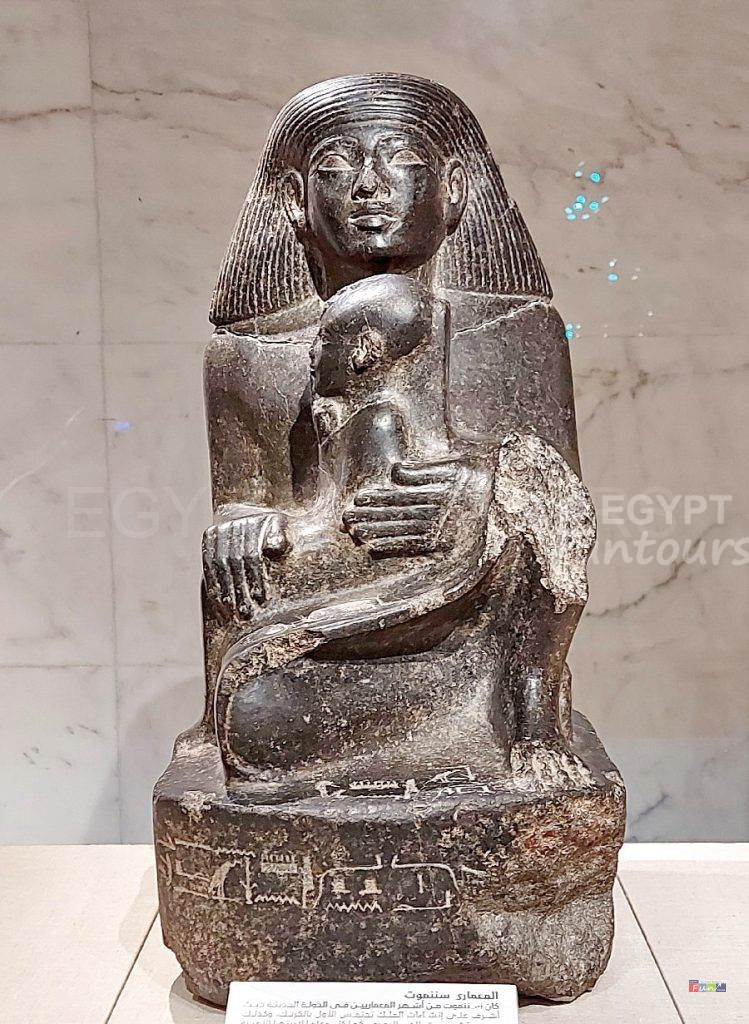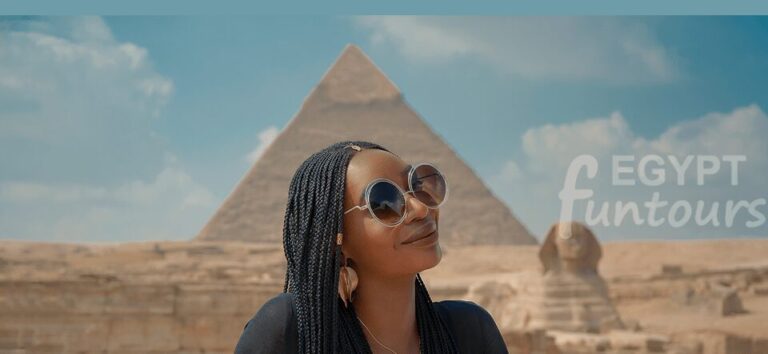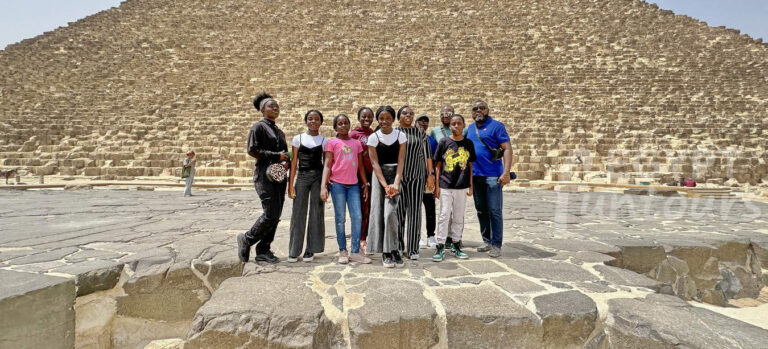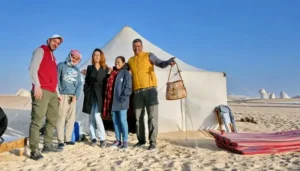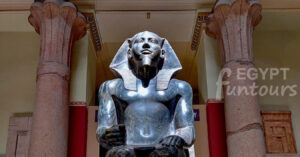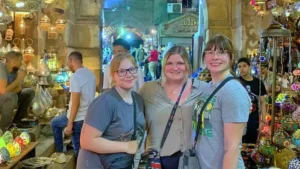Dynastic Period Artifacts in Civilization Museum (NMEC)
A Timeline of Ancient Egypt: The Dynastic Period (3200 – 332 BCE)
The ancient Egyptians united their nation and established a system of government that they passed down through many royal dynasties. This period began with the founding of the Egyptian state in the third millennium BCE. From the start of the Dynastic Period in 3200 BCE until Alexander the Great’s conquest in 332 BCE, Egyptians divided their rule into 30 governing dynasties. Throughout its long history, this period saw relative stability, though it also experienced periods of governmental breakdown, internal wars, and foreign aggression.
The King and the Divine Order
According to ancient Egyptian theology, people believed their virtuous rulers descended from a single divine line. They saw the king as the image of God and his descendant on Earth. As the keeper of God’s heritage, the king governed the state according to Maat, a concept representing truth, justice, and cosmic order. He was responsible for his people’s well-being and the preservation of the country’s borders.
Administration and Achievements
The Dynastic Period also saw the formation of the world’s first administrative system. The army maintained internal security and expanded the country’s borders, while ministers represented administrative power and helped the king manage the country’s affairs and resources.
Furthermore, Egypt’s advancement in medicine, astronomy, and engineering, as well as wisdom and literature, reached its peak during this time. Each of these stages had distinct architectural and artistic qualities, with art styles in reliefs and sculptures that endured until the end of the Roman Empire.
Dynastic Period Artifacts in the National Museum of Egyptian Civilization (NMEC)
Here is a breakdown of the Dynastic Periods and their key characteristics, from which the NMEC houses artifacts.
The Archaic Period (3100 – 2686 BCE)
During the 1st and 2nd dynasties, people united Upper and Lower Egypt, founded the state, and developed more complex cultural features.
The Old Kingdom (2686 – 2181 BCE)
From the 3rd through the 6th dynasties, this period was a time of civic renaissance. People built and evolved the pyramids. Additionally, this era saw the creation of the “Pyramids Texts,” the world’s earliest collection of religious literature.
The First Intermediate Period (2181-2055 BCE)
From the 7th to the 10th dynasties, Egypt experienced a period of weakness and political conflict, which contributed to the country’s collapse.
The Middle Kingdom (2055-1650 BCE)
From the 11th to the 13th dynasties, Egypt regained its unity. It saw a rebirth in agriculture and art, and expanded its southern and eastern borders. During this time, the “Coffin Texts” emerged as the largest collection of Egyptian funeral literature.
The Second Intermediate Period (1650-1550 BCE)
From the 14th to the 17th dynasties, Asian migrants known as the “Hyksos” took control of the Delta. They expanded their dominance into Middle Egypt, while local dynasties maintained control in Upper Egypt.
The New Kingdom (1550-1069 BCE)
From the 18th to the 20th dynasties, Egyptians drove the Hyksos from Egypt. They used their military might to build a vast empire. Egypt experienced a unique era of military strength and economic success, which people reflected in their temple architecture and wealth.
The Third Intermediate Period (1069–747 BCE)
From the 21st to the 25th dynasties, the country experienced internal divisions. After losing its overseas territories, Egypt was attacked by inhabitants of the Libyan Desert, Upper Nubia, and the Assyrians.
The Late Period (747-332 BCE)
From the 26th to the 30th dynasties, the Egyptians tried to resurrect the glory of their ancient past during a final awakening. However, internal strife and Persian invasions plagued the nation until Alexander the Great finally conquered Egypt.
Goddess Isis Statues
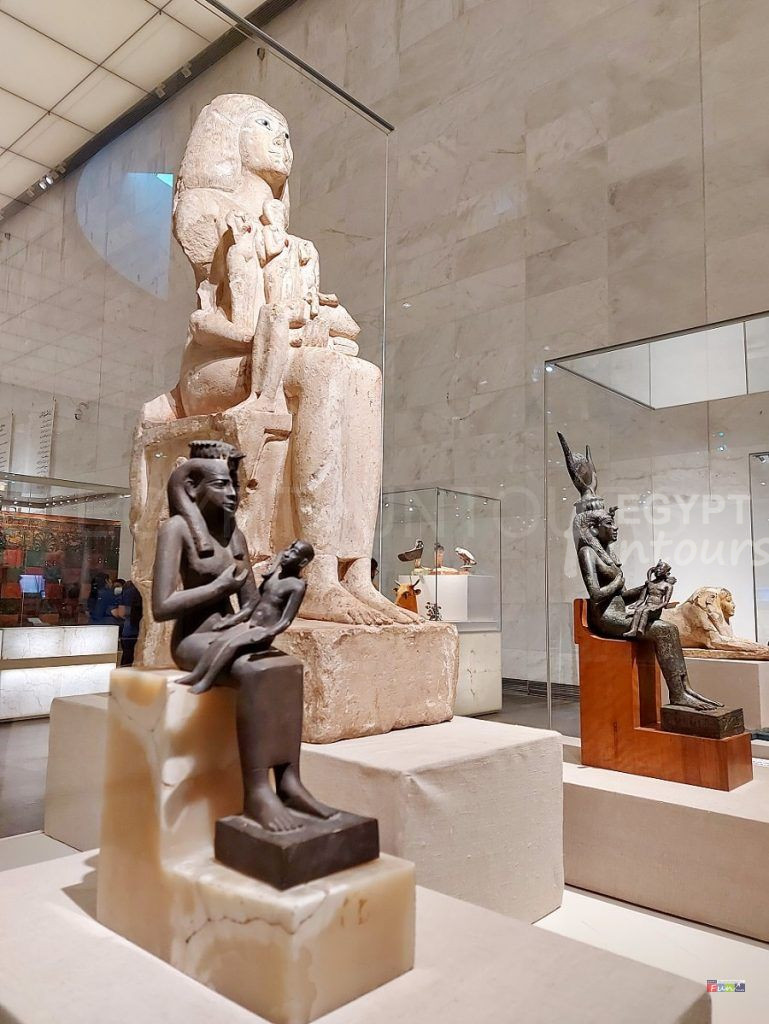
One of the Dynastic Period Artifacts in Civilization Museum (NMEC) is Goddess Isis who is shown as a mother feeding her son, the King, who is depicted as deity Horus, goddess Isis’ son. The statues are reminiscent of the icon of the Virgin Mary and her son Jesus.
Limestone / Old Kindgom
Stela of King Qa’a
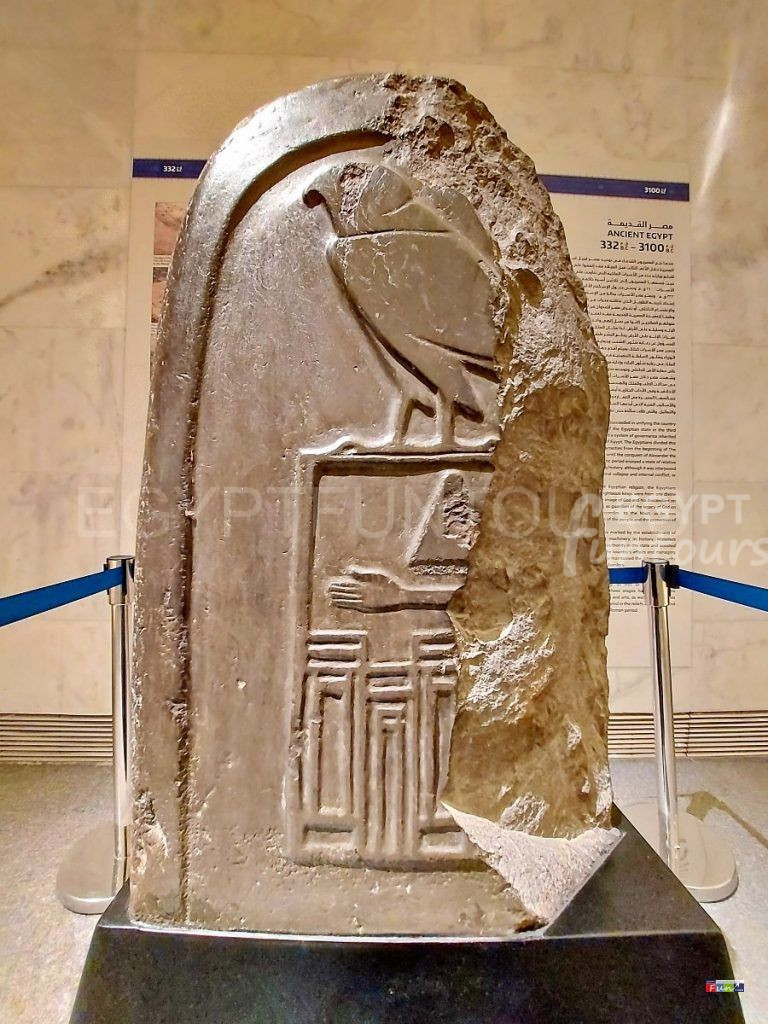
Qa’a was the final king of the 1st dynasty, which saw the kingdom emerge and the formation of the united state. This stela is one of several he built in front of his grave at Abydos. His Horus name is written above the “Serekh” adornment (The facade of the royal palace). The name Horus is one of the earliest regal titles in Egyptian history.
Archaic Period, 1st Dynasty (3100–2890 BCE) / Umm el-Qaab – Abydos / Basalt
Female Baker
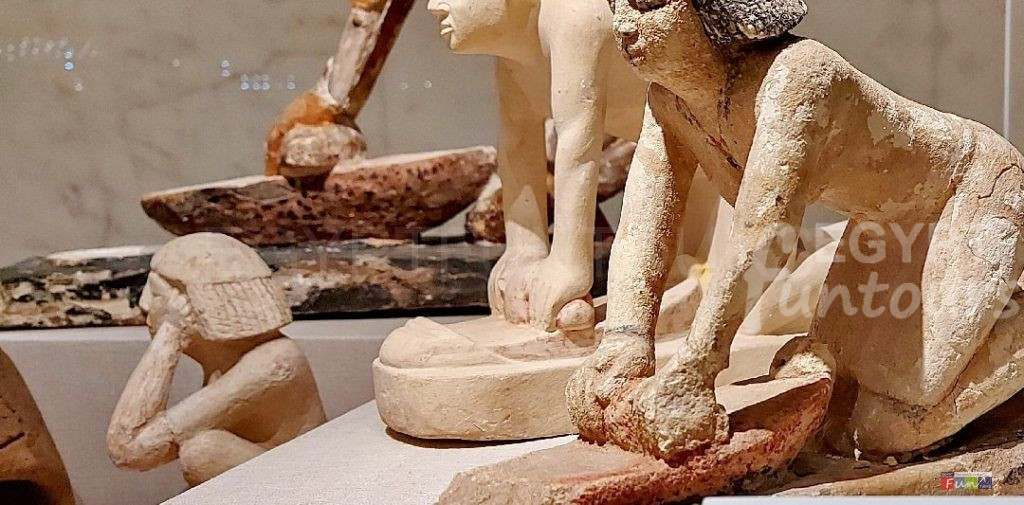
The bread was an important part of the ancient Egyptian diet, and it was often prepared from emmer or barley. This statue portrays a lady shielding her face from the heat of the oven while cooking the bread.
Grinding Wheat
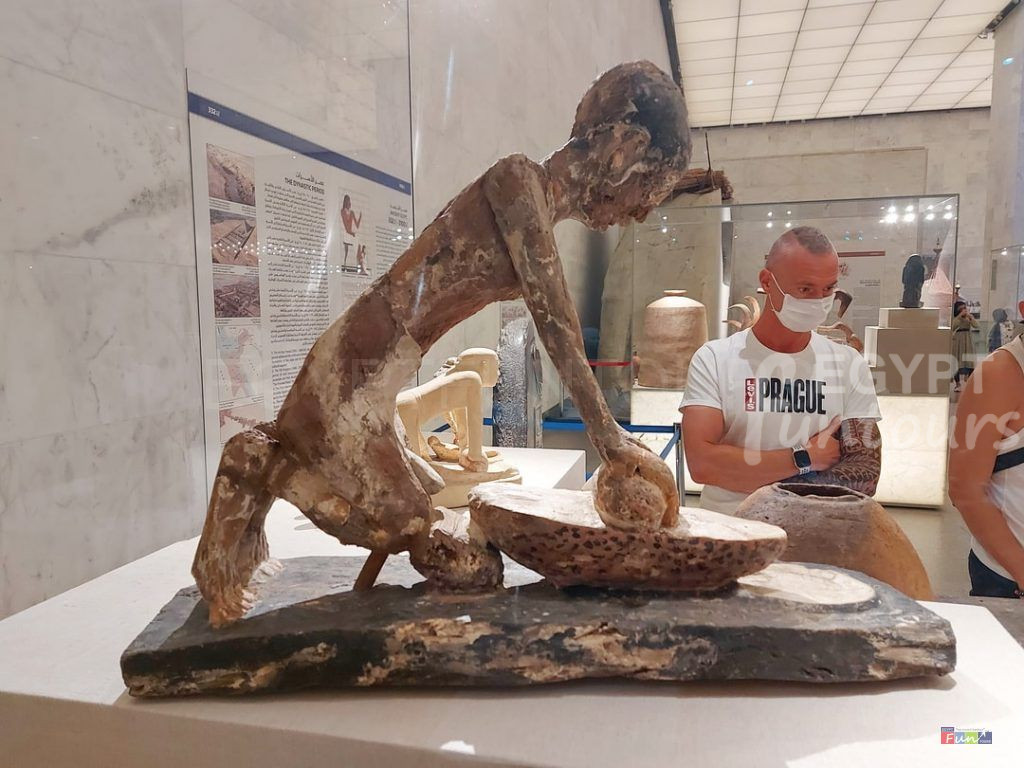
This one-of-a-kind statue portrays a worker working in the bread business, grinding wheat on a plate to make flour.
Saqqara / Wood, Old Kingdom, 6th dynasty (2345 – 2181 BCE),
Bread Loaf
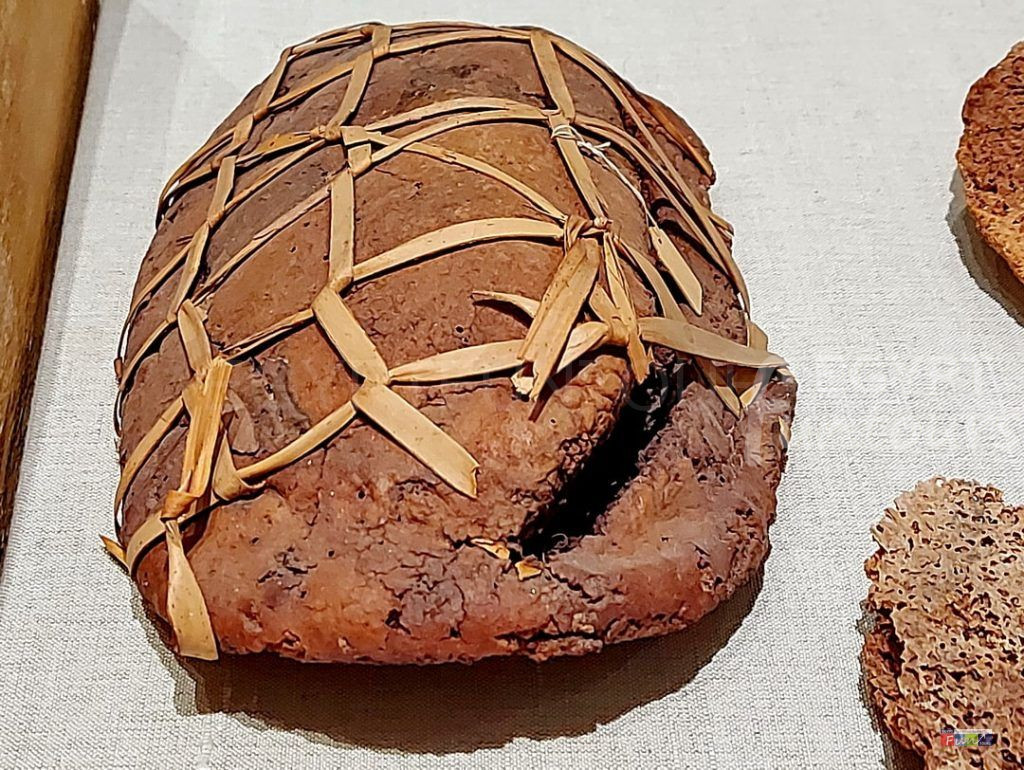
This loaf of wheat flour was discovered in one of the tombs of the workers’ settlement of “Deir al-Madina,” and it was one of several varieties of bread known in ancient Egypt.
Deir al-Madina – Luxor / New Kingdom – 19th dynasty (1295 – 1186 BCE) / Organic material
Model of a building
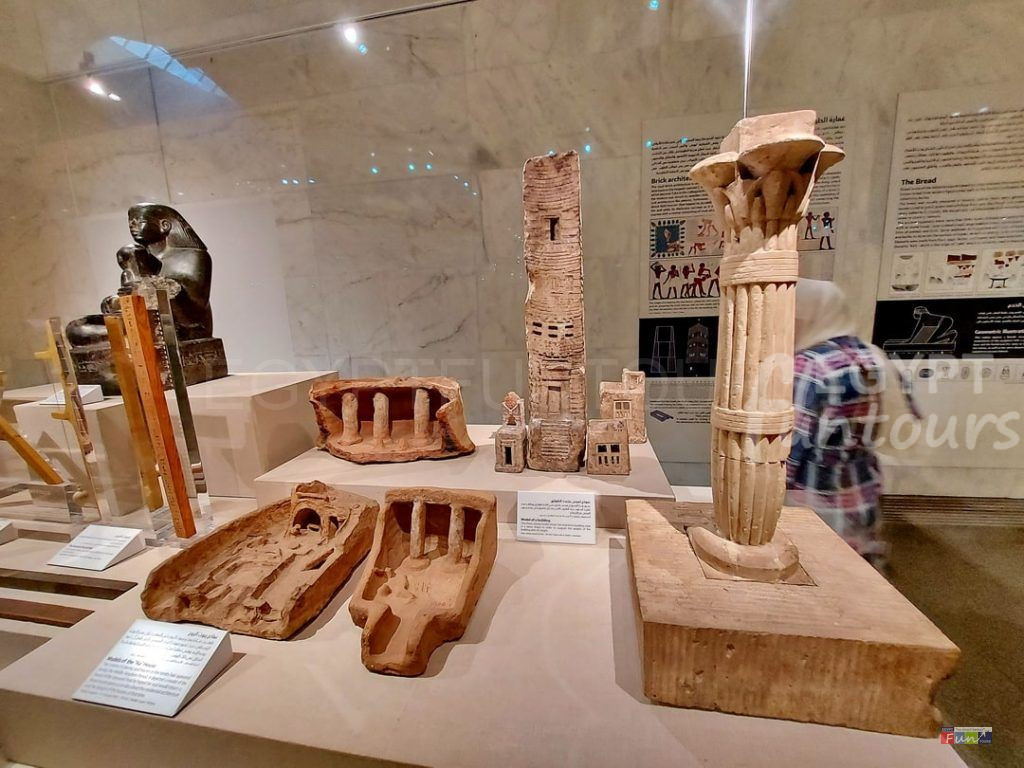
This three-story model depicts the mud-brick building style in a wavy pattern to sustain the structure’s weight with its height.
Sakha, Kafr el-Sheikh / Limestone / Greco-Roman Period (332 BCE – 395 AD)
Models of the “Ka” house
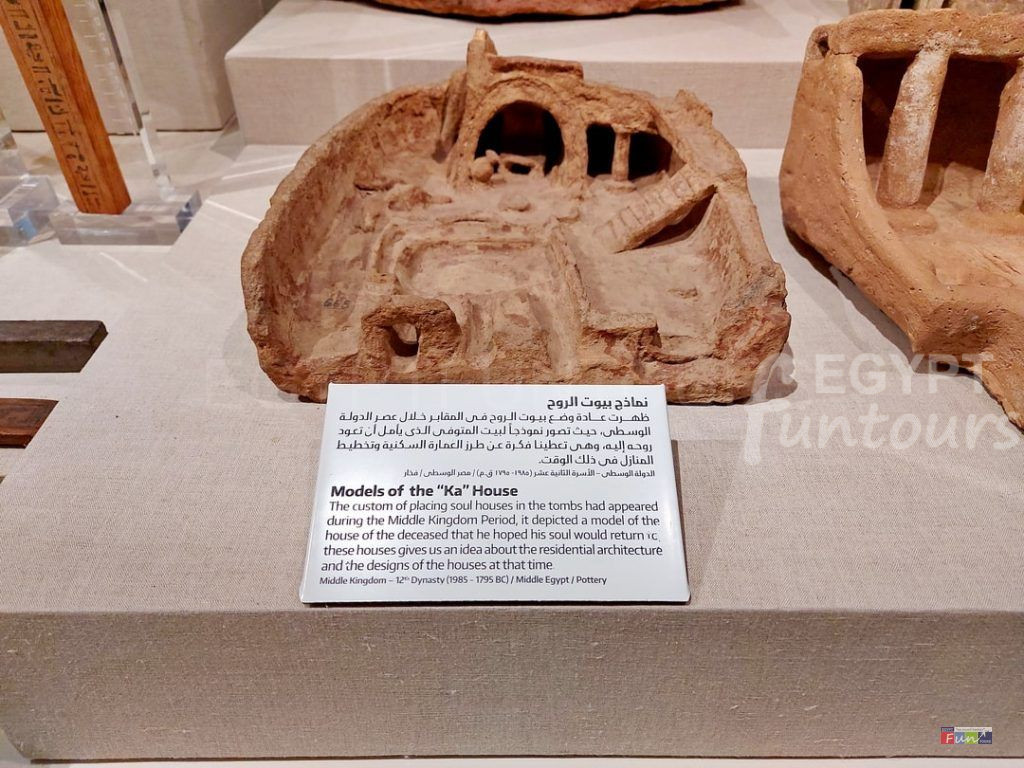
During the Middle Kingdom Period, the habit of putting soul houses in graves emerged; it portrayed a model of the deceased’s dwelling that he believed his spirit would return to. These residences provide information on domestic architecture and housing designs during the period.
Middle Kingdom – 12th Dynasty (1985 – 1795 BCE) / Egypt / Pottery
Plumb bob & Vertical plumb bob</h5>
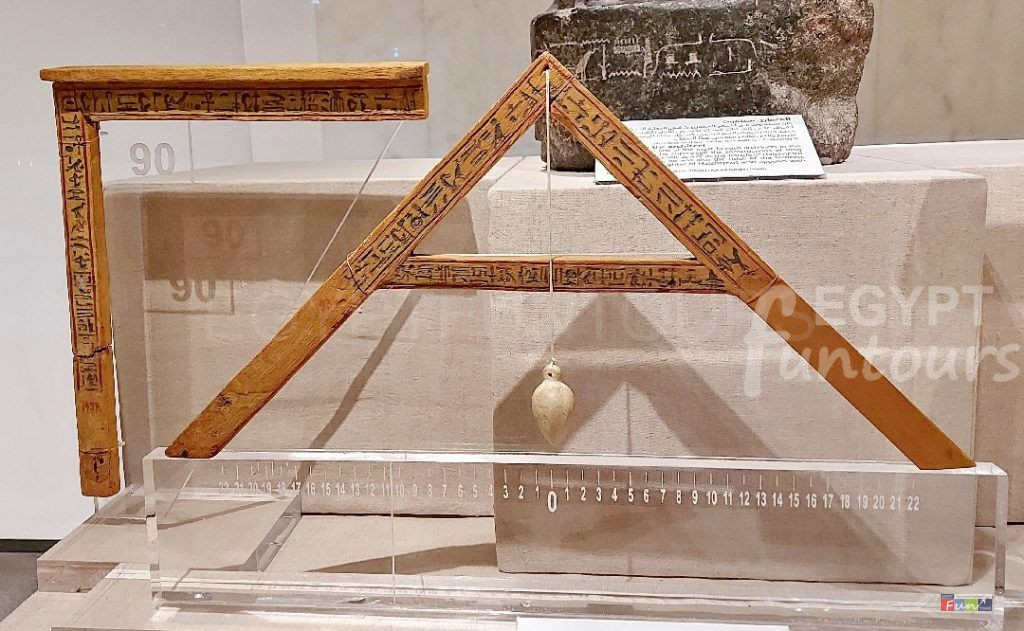
<strong>Plumb bob: As the vertical weight causes the inclination of the wall on the horizontal scale ruler, the plumb bob was employed to assess the horizontal straightness of the wall. Deir el-Madina – Luxor / Wood / New Kingdom – 19th dynasty (1295 – 1186 BCE)
Vertical Plumb bob: It was used to determine the wall’s vertical alignment on the ground.
New Kingdom – 19th dynasty (1295 – 1186 BCE) / Deir el-Madina / Luxor
Wooden Hammers
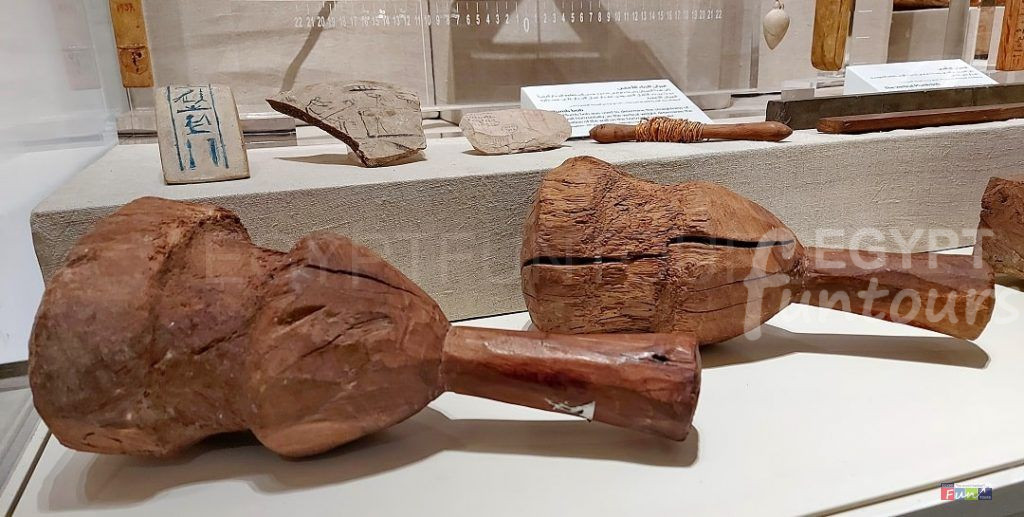
Mud-brickwork and limestone blocks were erected using wooden hammers, which were gently struck above the bricks to suction air and bond the bricks together. This aids in straightening up the structure’s alignment. New Kingdom – 19th dynasty (1295 – 1186 BCE) / Deir el-Madina / Luxor
Senmut the Architect
Senmut was one of the most prominent architects of the New Kingdom; he oversaw the construction of King Thutmose I’s temple at Karnak, as well as Queen Hatshepsut’s temple in Deir el-Bahari; he was also the tutor of Princess Neferura, Hatshepsut’s daughter, who appears with him in this statue.
/>18th dynasty / New Kingdom (1550 – 1295 BCE) / Karnak temple / Granite</p>
style=”text-align: center;”>The deities of protection

A group of protective goddesses’ statues was discovered in the tomb of King Amenhotep II. The goddesses were believed to protect the king’s body during his journey in the afterlife. They are Wadjet (a cobra), Nekhbet (a vulture), Meretsegert (a winged cobra), and the cows Mehet-Weret and Hathor. These goddesses are among the earliest that ancient Egyptians revered. New Kingdom – 18th dynasty (1550-1295 BCE) / Valley of the Kings – Thebes / wood
Thoth

The ancient Egyptians worshipped the Ibis bird and linked it with the moon, probably due to its curved beak’s resemblance to the lunar crescent. Ibis’s extraordinary talents in detecting earthworms had earned it the reputation of knowing buried truths. As a result, it was properly regarded as a sign of Thoth, the ruler of wisdom and knowledge, as well as the deity of time and the moon. He was also the patron of scribes, as well as the creator of letters and words.
Tuna el-Gebel / Wood – Bronze – Organic material / Greco-Roman Period (332 BCE – 395 AD)
Hapi the scribe
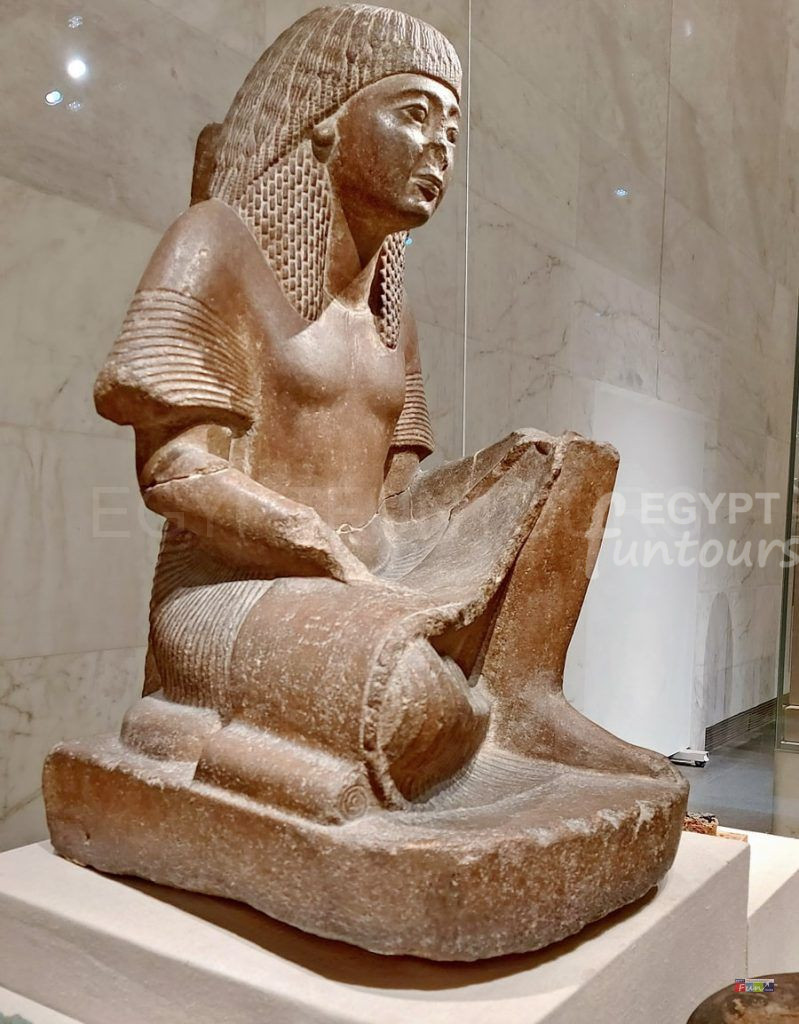
Hapi was the administrative director of the Amun-Ra temple at Karnak; he is seen carrying a papyrus, which represents his position as one of the temple’s scribes.
19th dynasty, New Kingdom (1295 – 1186 BCE) Sandstone / Karnak
Princess “Isetemkheb II’s” Baldachin
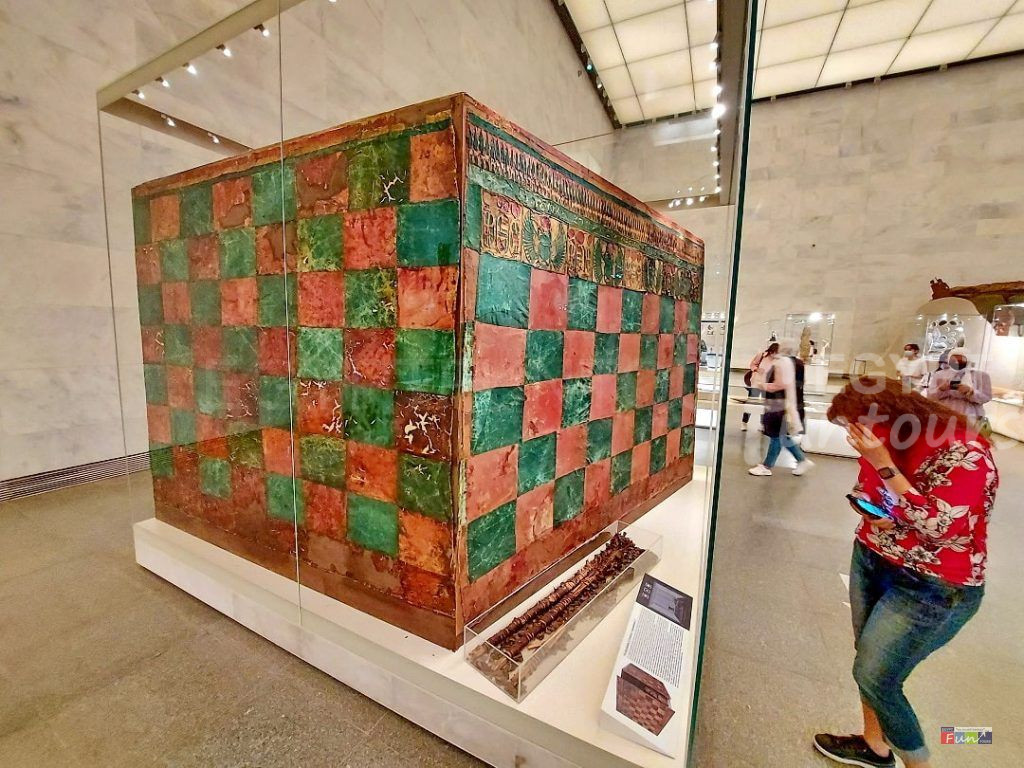
Since the predynastic period, the ancient Egyptians have utilized tents constructed of matting, leather, and thick linen fabric as a temporary method of habitation.
The everyday life scenarios revealed that tents were utilized by the ancient Egyptians on hunting trips and military campaigns, as well as as a temporary dwelling for deity statues in processions. In addition, tents were built up in the gardens and courtyards of houses for housewives to use during the last stages of pregnancy and delivery.
Amusement and leisure
During the hot summer, people erected tents and pavilions made of fine linen beside the palaces’ lakes and gardens for amusement and leisure. Furthermore, aristocrats and wealthy individuals would place a baldachin made of matting or leather in front of their tombs for purification ceremonies and would eventually bury it with the corpse. When Emile Brugsch and Ahmed Kamal cleared the Deir el-Bahari cache (TT 320) in 1881, Brugsch discovered this unique tent buried in one of its corridors. It still retained its bright colors because they had made it entirely of appliqué-colored leather. The artisans had decorated it with carefully cut-out leather ornaments and texts fixed on a different-colored piece of leather.
These writings depict “Isetemkheb II’s” delightful company with God Khonso Lord of Thebes, Goddess Mut, and the deities of the other world amid the fragrance of flowers and perfumes from Punt. It is noteworthy as it is the sole tent from ancient Egypt that has survived to the present day.
This tent was built between 1046 and 1037 BCE for the funeral purification of “Isetemkheb II,” the daughter of the army general and Amun high priest “Masaherta” and Amun chantress “Tayuheret,” and the granddaughter of King “Pinudjem I” of the 21st dynasty. Notable, “Isetemekheb II” held the rank of “superior of the harem of Min, Horus, and Isis in Akhmim” and was one of the numerous princesses in the family to have this name.
Although “Isetemkheb II’s” coffin has yet to be unearthed, her cousin “Pinudjem II’s” coffin was discovered in the Deir el-Bahari cache and is currently exhibited within the baldachin.
Sennedjem’s inner coffin
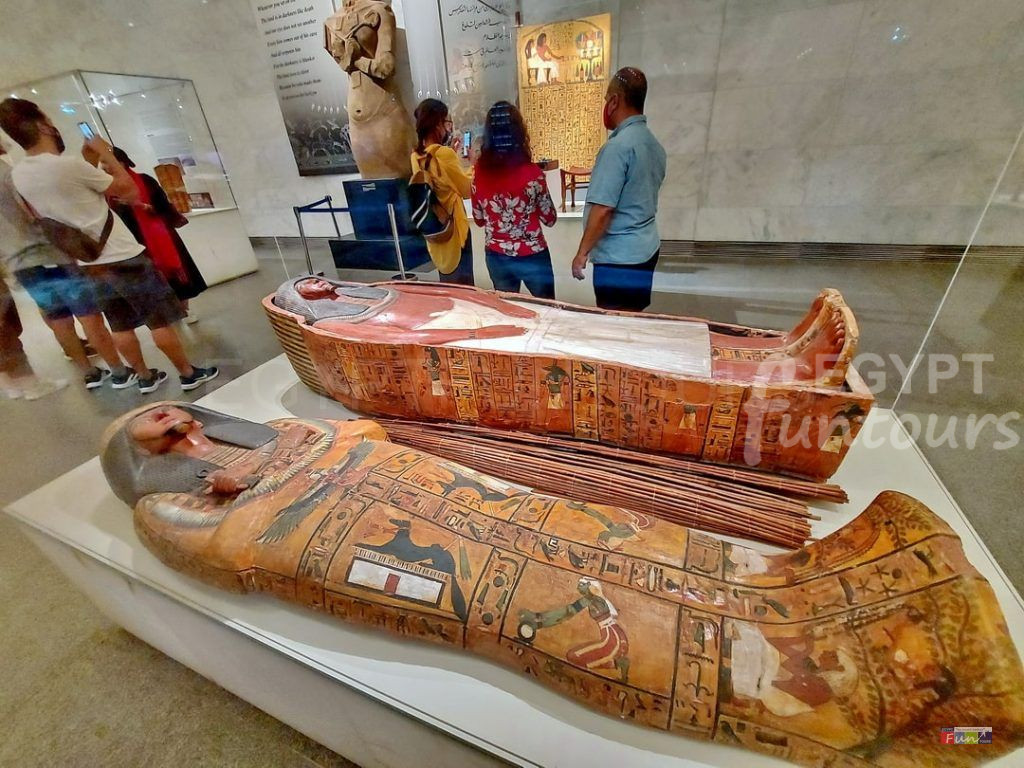
Sennedjem’s inner coffin is anthropoid in shape, and his mummy was within. The inner cover portrays Sennedjem in his worldly attire, wearing a long white linen kilt. The casket is adorned with funeral scenes of the Book of the Dead’s protecting goddesses, with Sennedjem receiving food from the Tree goddess.
The 19th dynasty of the New Kingdom (1295-1186 BCE). Thebes / Deir el-Madina / Wood – Pigment
The Senet

Until the end of the Greco-Roman Period, the “Senet” was one of the earliest and most popular games among the Egyptians. It also had religious symbolism, which enabled the player to overcome the obstacles he encountered in the other world, which is quite similar to the modern-day game “The Ladder and Serpent.”
Deir el-Madina – Western Thebes / Wood – Faience / New Kingdom, 19th dynasty (1295 – 1186 BCE)
King Akhenaten
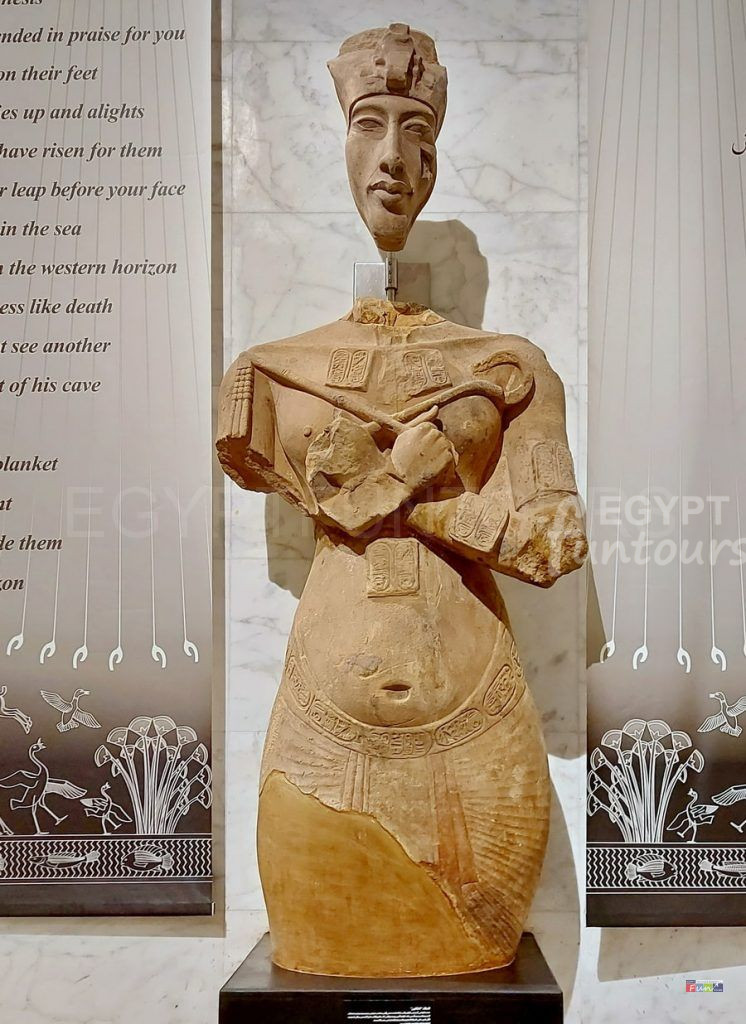
When Amenhotep IV became king, he instituted a new theology in which the characteristics of all deities were merged into one deity, “Aten,” and he advocated for peace and religious tolerance. His doctrine had a profound effect on ancient Egypt’s intellectual, religious, and artistic life.
Karnak / New Kingdom, 18th dynasty
Lady Isis’s coffin

We discoverd the coffin in Sennedjem’s grave among numerous other family members’ coffins. It is Lady Isis’s property, as she is the wife of the craftsman Khabekhent, son of Sennedjem. The outside cover portrays Isis wearing a loose robe and clutching holy ivy leaves. The four sons of Horus encircle the coffin to guard her body. Deir el-Madina, Thebes / Wood – Pigment / New Kingdom, 19th dynasty (1296 – 1186 BCE)
Sennedjem’s Funerary Furniture

A selection of pieces from Sennedjem’s funeral furniture, was in his grave in the hope of being used in the hereafter.
The New Kingdom, 19th dynasty (1295-1186 BCE) / Deil el-Madina, Thebes / Wood – Stucco
Statuettes of Captives
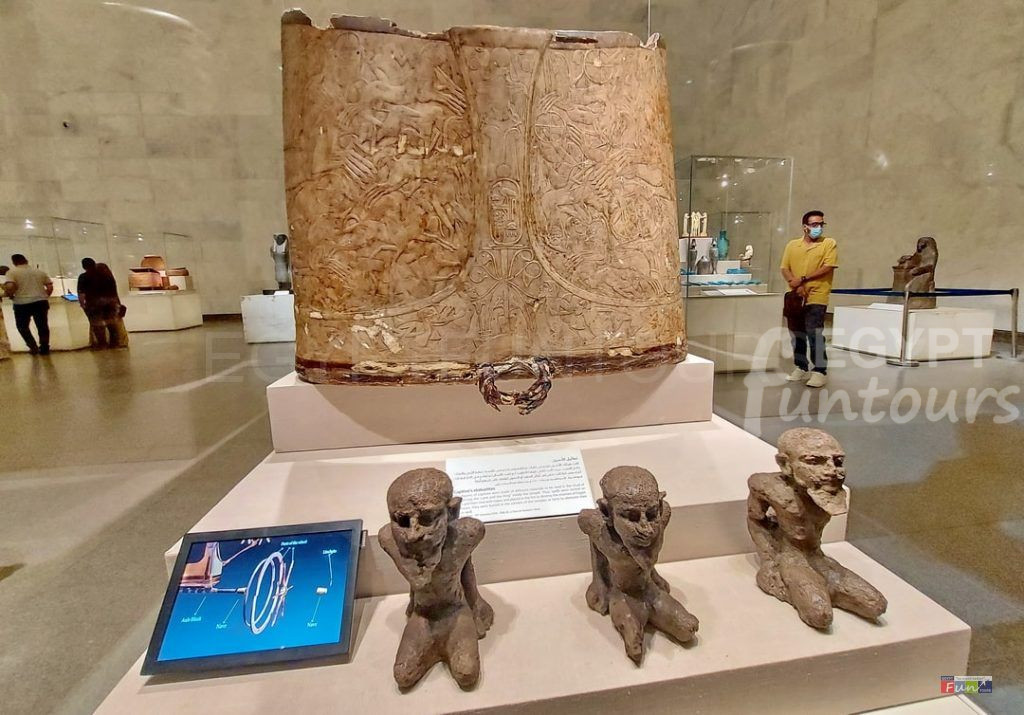
In the “Protecting the King’s land” ritual, artisans fashioned captive figurines from a variety of materials. They performed spells on the figurines, then bound them with ropes and threw them into a fire to kill Egypt’s foes. They also buried the figurines in the corners of temples and forts to eradicate their wickedness. The New Kingdom, nineteenth dynasty (1295–1186 BCE) / Tura el-Asmant / Mud
Water Purification
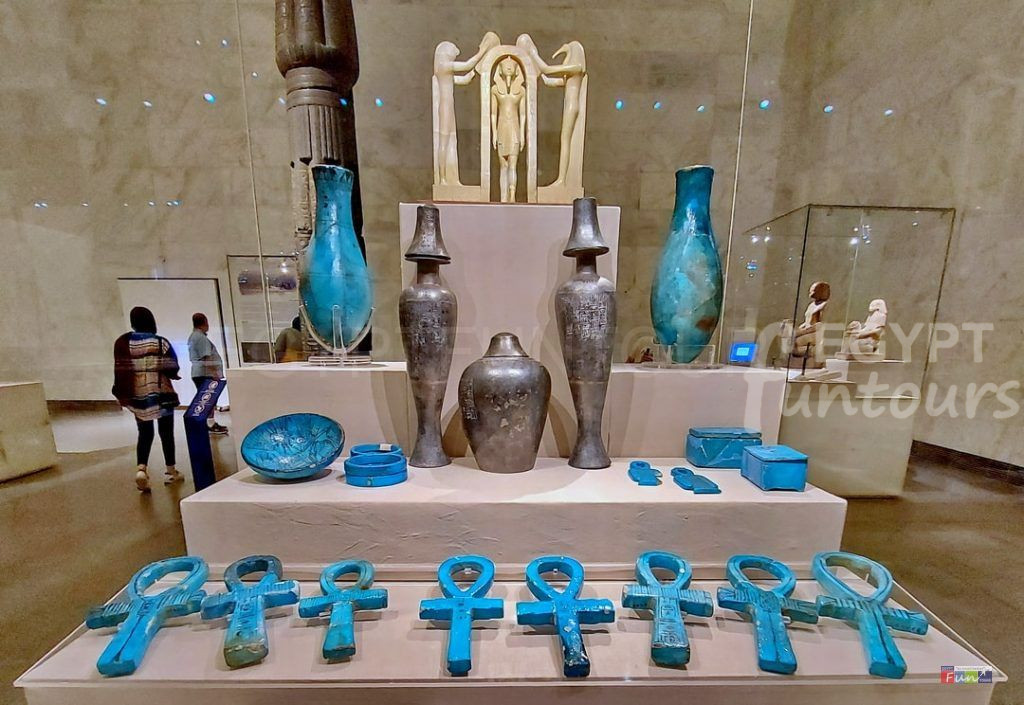
After his arrival from the other world, the sun god purifies himself in the eastern horizon before ascending to Heaven, where the four gods “Horus”, lord of the North, “Seth”, lord of the South, “Dewen-anwy”, lord of the East, and ” Thoth”, lord of the West” pour the water of life and power over him from the four corners of the universe.
This unique monument portrays king Amenhotep II merged with the sun god in his glory at his cleansing on the horizon.
The 18th dynasty of the New Kingdom (1550 – 1295 BCE) / Valley of the Kings – Thebes / Alabaster
Paser, the vizier
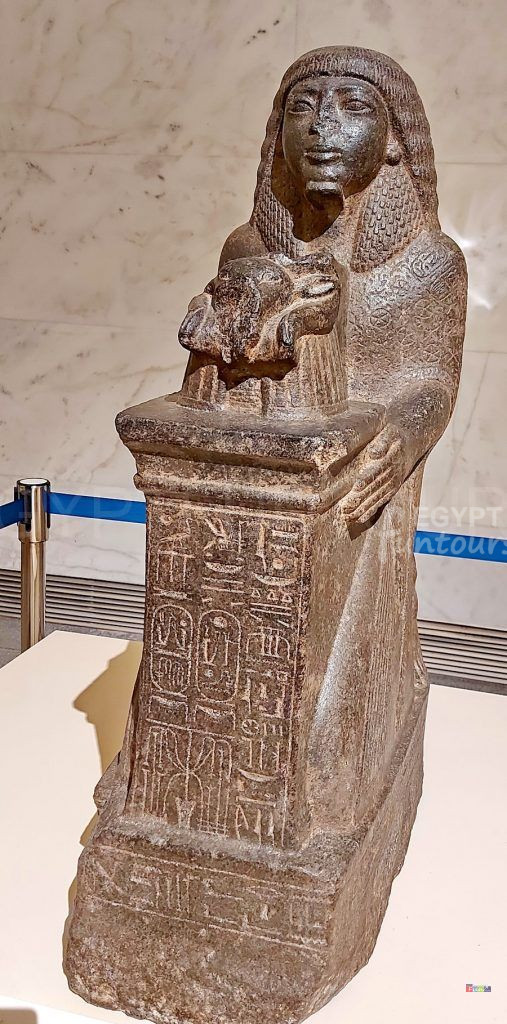
Paser lived during the time of King Seti I when he served as the king’s lone companion and held several positions such as royal palace counselor, governor of the city “Thebes,” and collector of foreign nations’ tribute for the king. Then, during Ramses II’s reign, he became a judge, a seal bearer, and the king’s representative in Nubia, where he oversaw the construction of the Abu Simbel temple.
He also served as high priest and administrator of the Karnak temple until his death in Ramses II’s 25th year. Paser appears in this statue holding an alter crowned with the head of a ram, the Karnak deity Amun Ra.
The New Kingdom, 19th dynasty – Ramses II’s reign (1279 – 1213 BCE) Black Granite / Karnak
Princess Neferuptah’s pectoral
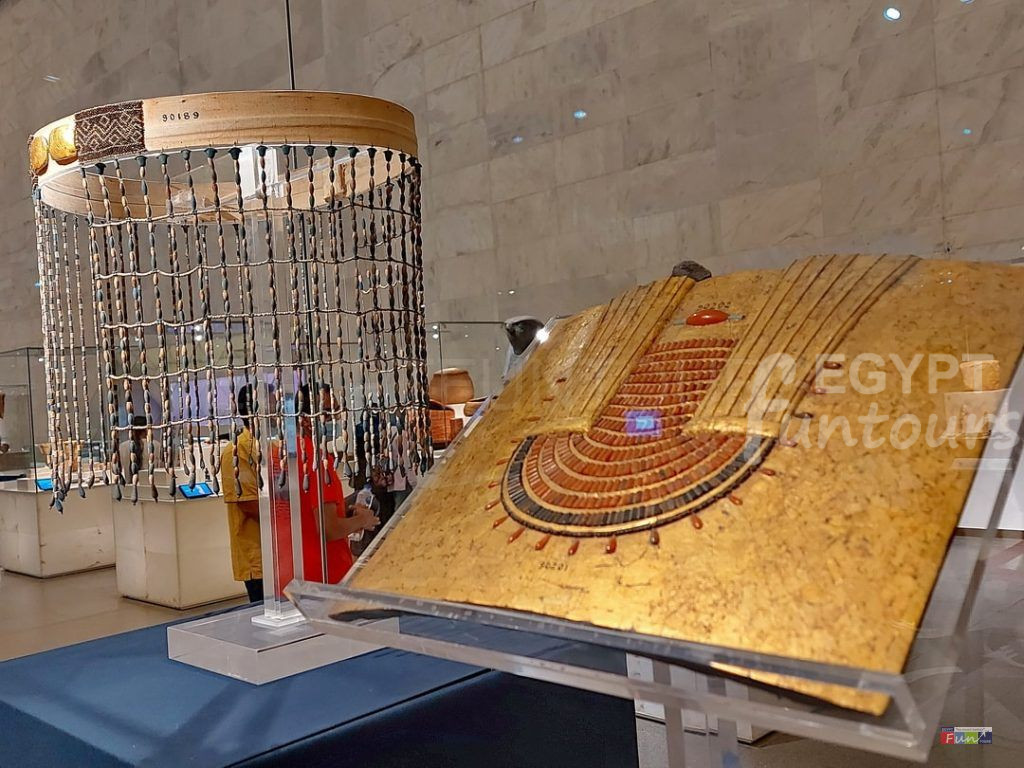
One of the Dynastic Period Artifacts in the Civilization Museum (NMEC) is Princess Neferuptah. She was the daughter of King Amenemhat III. Her jewelry collection is considered one of the most unique and exquisite in the world. It was discovered in 1956 in her tomb near her father’s pyramid at Hawara in Fayum. Middle Kingdom, 12th dynasty (1985–1795 BCE) / Hawara, Fayum / Gold – Camelian – Faience
Apis Stelae
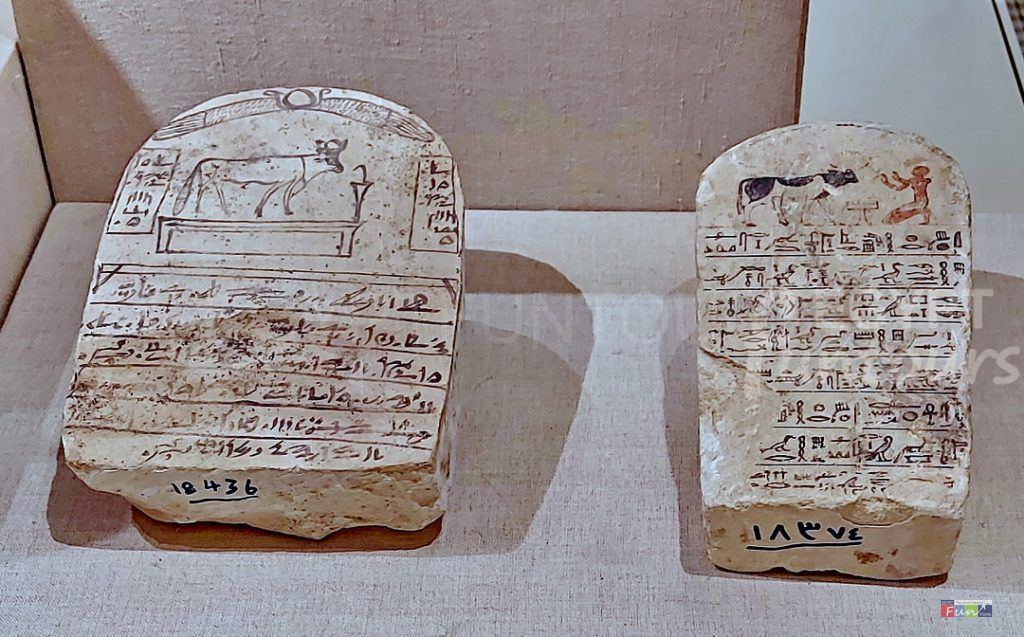
The sacred bull catacombs at Heliopolis, Saqqara, and Armant were among the holy sites visited by pilgrims. During festivals, visitors used to lay votive stelae to mark their visit to these locations and to show their gratitude.
Period of Ptolemaic Egypt (305 – 30 BCE) /Limestone
The Priest Psamtik Seneb

One of the Dynastic Period Artifacts in Civilization Museum (NMEC) is The Naophorous or Naos-carrier statue which is one of the prominent forms of late-period sculptures that emphasized the owner’s piety and connection to the gods. This statue portrays the priest “Psamtik-Seneb” bowing and bearing the Naos of the deity “Atum,” the god of creation and Lord of Heliopolis.
Tanis / Late Period (747 – 332 BCE) / Limestone
Musical Concert
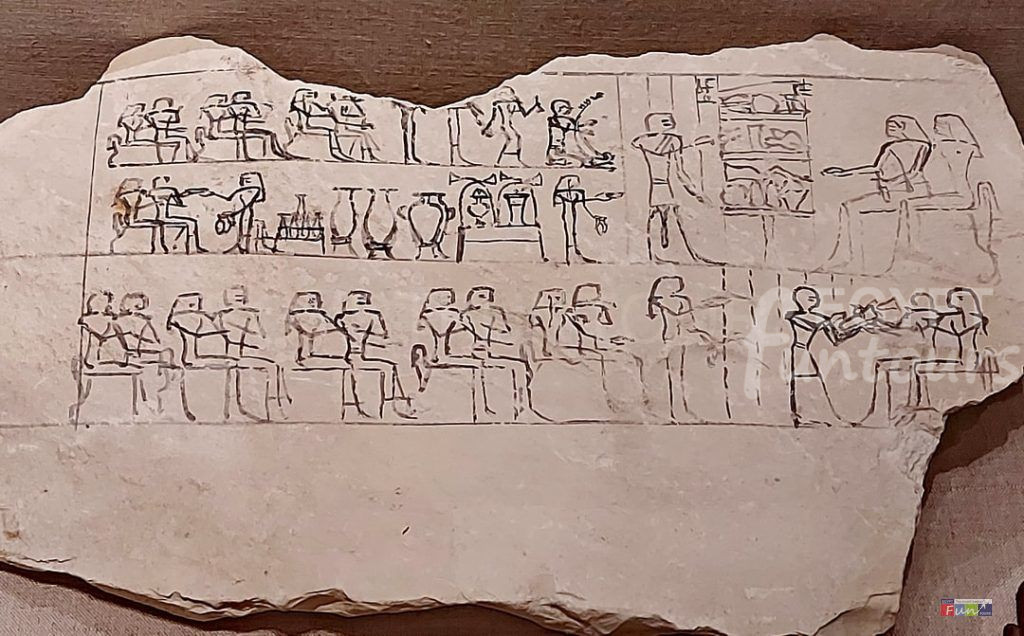
Concerts and musicians were a frequent subject in New Kingdom art; this ostracon depicts a drawing for a musical performance that the artist intended to represent on the wall; the sketch provides us with a comprehensive image of the ceremony’s design.
Luxor / Limestone / New Kingdom, 19th dynasty (1295 – 1186 BCE)
Flute & Harp
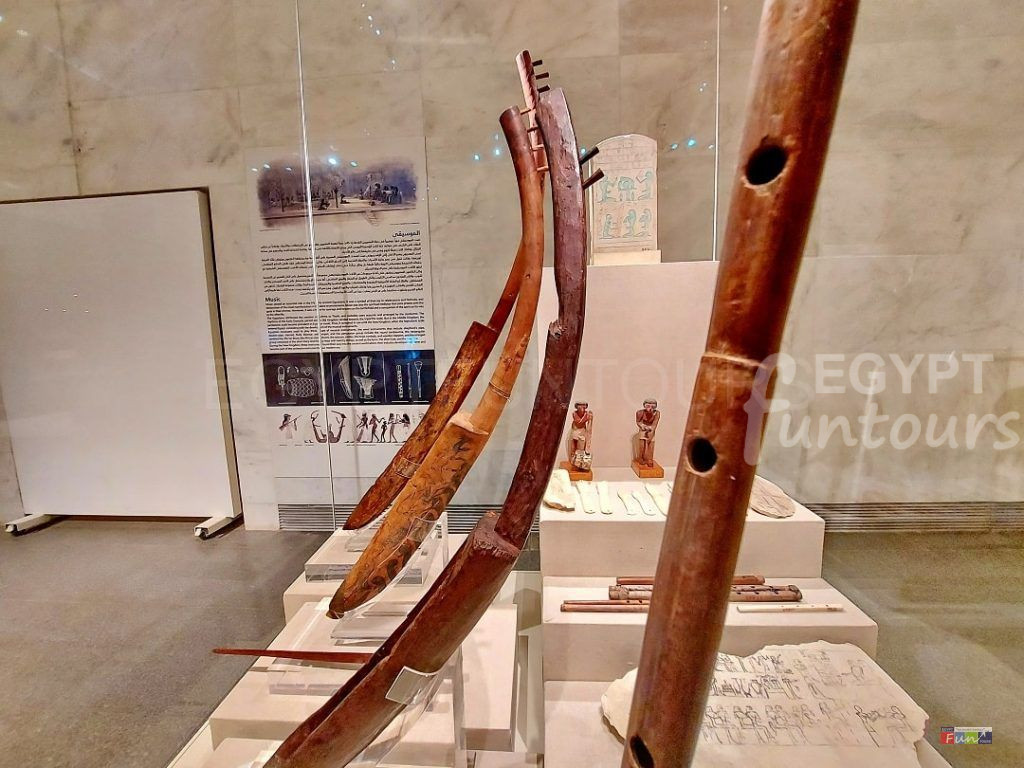
The ancient Egyptians considered the flute a vital musical instrument and often depicted it in concert scenes on the walls of temples and tombs. Typically, the Egyptian flute has five holes. This specific flute comes from the New Kingdom, 19th dynasty (1295–1186 BCE), we found it in Luxor, and is made of reed.
The short harp was also a popular musical instrument in ancient Egypt. Artisans frequently adorned its outside surface with vibrant patterns.
Luxor / New Kingdom, 19th dynasty (1295 – 1186 BCE)
Cosmetics
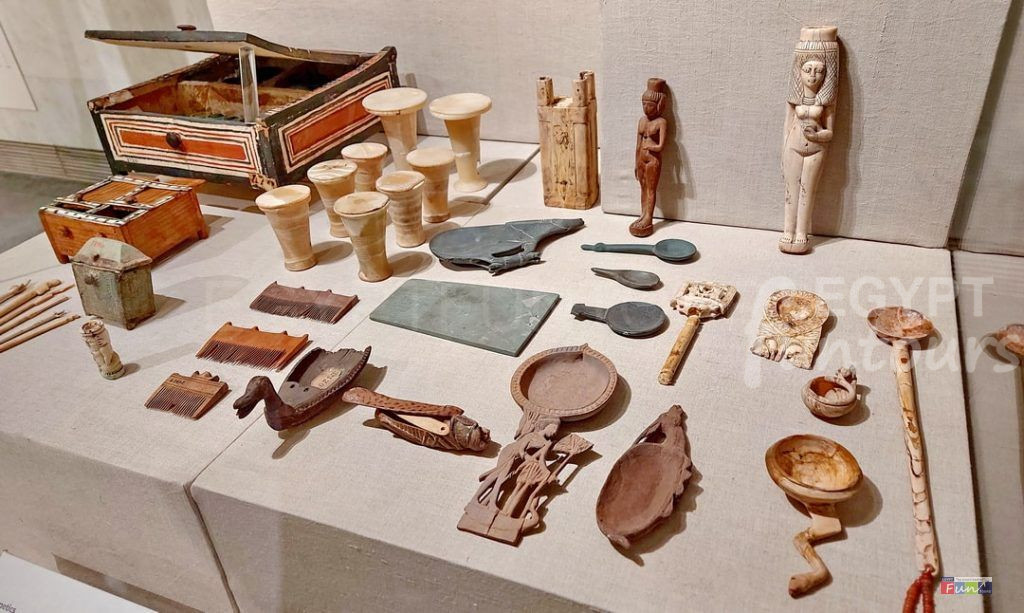
Since ancient times, Egyptian women have had a strong interest in beauty and adornment, as seen by their use of black and gray eyeliners. They kept their eyeliners in containers of various shapes and materials. They also used red-tinted blushers. These women were intimately familiar with oils and fragrant fats and carefully stored them in exquisite jars shaped like animals or birds. She also took care of her hair’s look, combine it with combs and fastening it with hairpins in front of metal mirrors.
Amun-Ra King of Gods
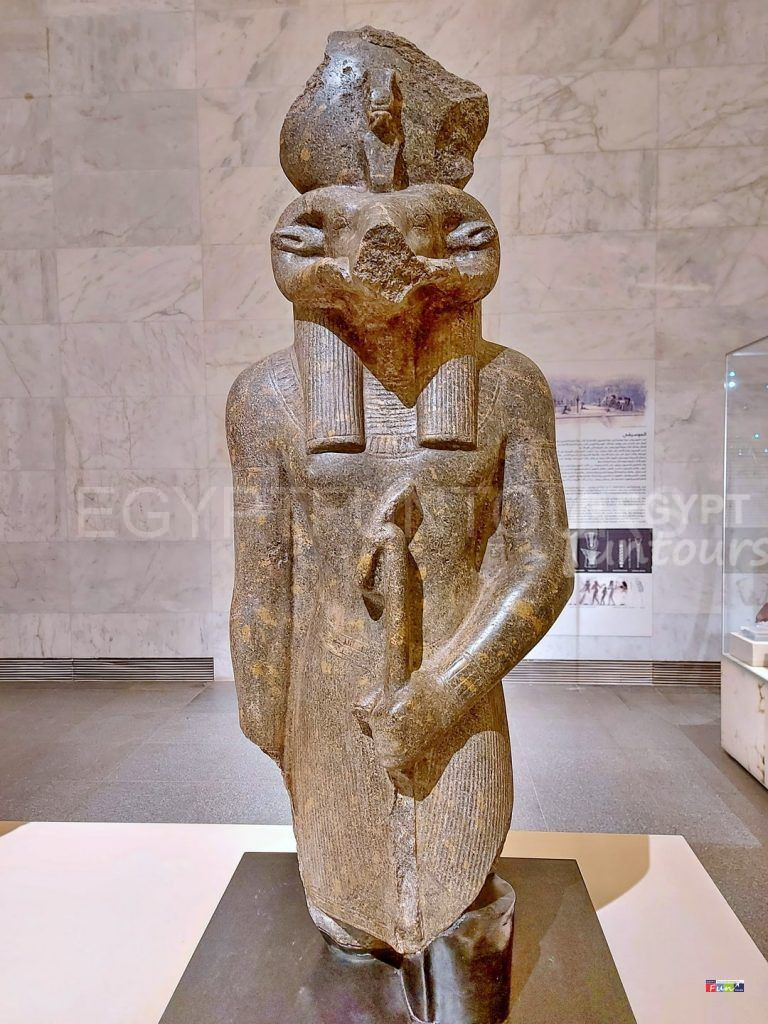
Amun-Ra was one of the most prominent and famous deities in ancient Egypt. He served as the state’s primary god during the Middle and New Kingdoms, where people knew him as the “King of the Gods.” They primarily devoted themselves to him at the Karnak temple. Karnak / Diorite / New Kingdom, 18th dynasty (1550 – 1295 BCE)
Ra-Horakhty
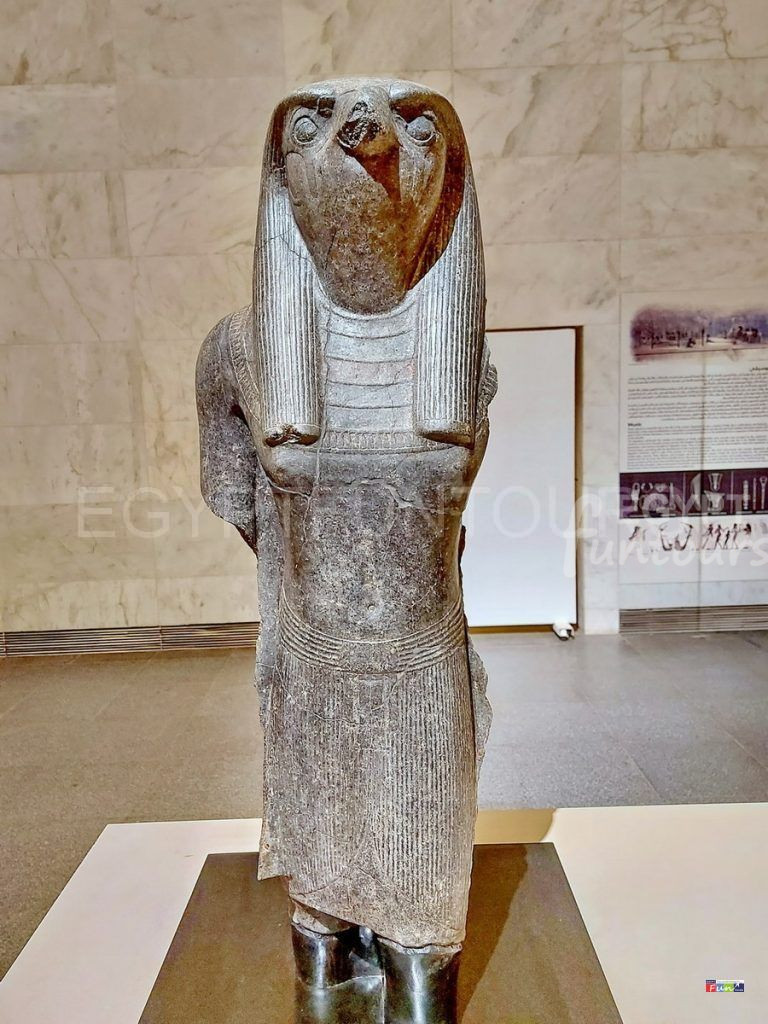
Ra-Horakhty was a theological union of two gods. Ra symbolized heavenly kingship, while Horus symbolized earthly kingship. Together, they represented the sun god’s authority as he ruled the two horizons and appeared on Earth. San al-Hagar / Granodiorite / New Kingdom, 19th dynasty (1295 – 1186 BCE)
Basketry
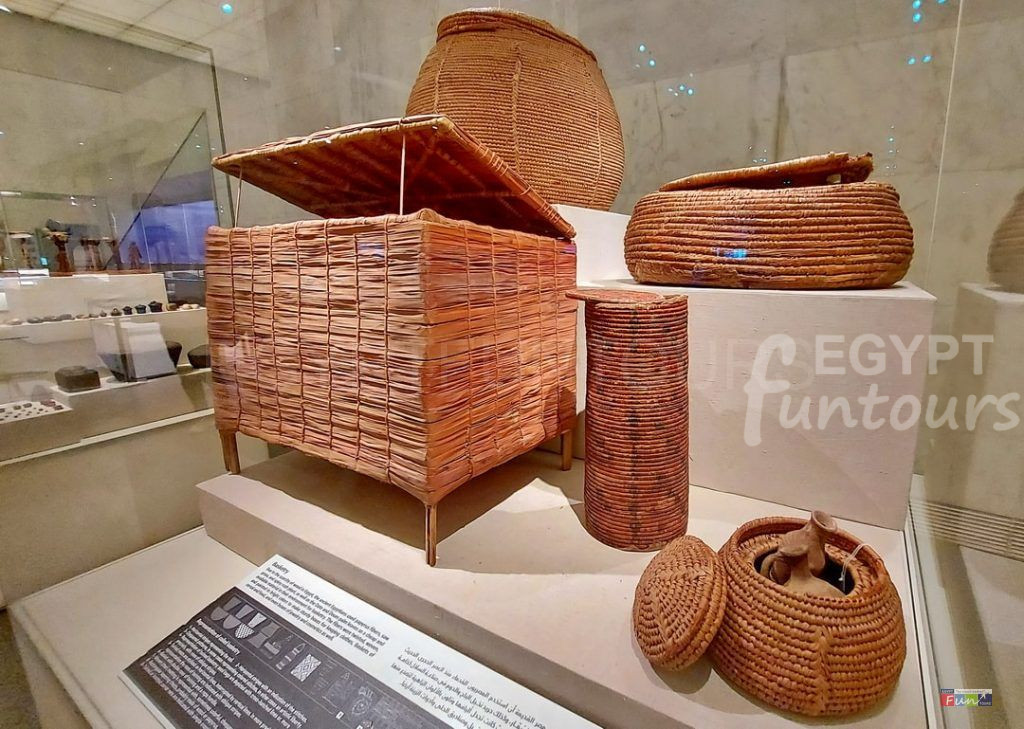
Due to the paucity of wood in Egypt, the ancient Egyptians made baskets from papyrus fibers, saw grass, prickly rush plants, as well as Date and Doum palm leaves. Artisans twisted, braided, and painted the fibers in vibrant colors to create robust boxes for storing clothes, baskets for cereal and food, and even boxes for jewels and cosmetics.
The Birth of Isis
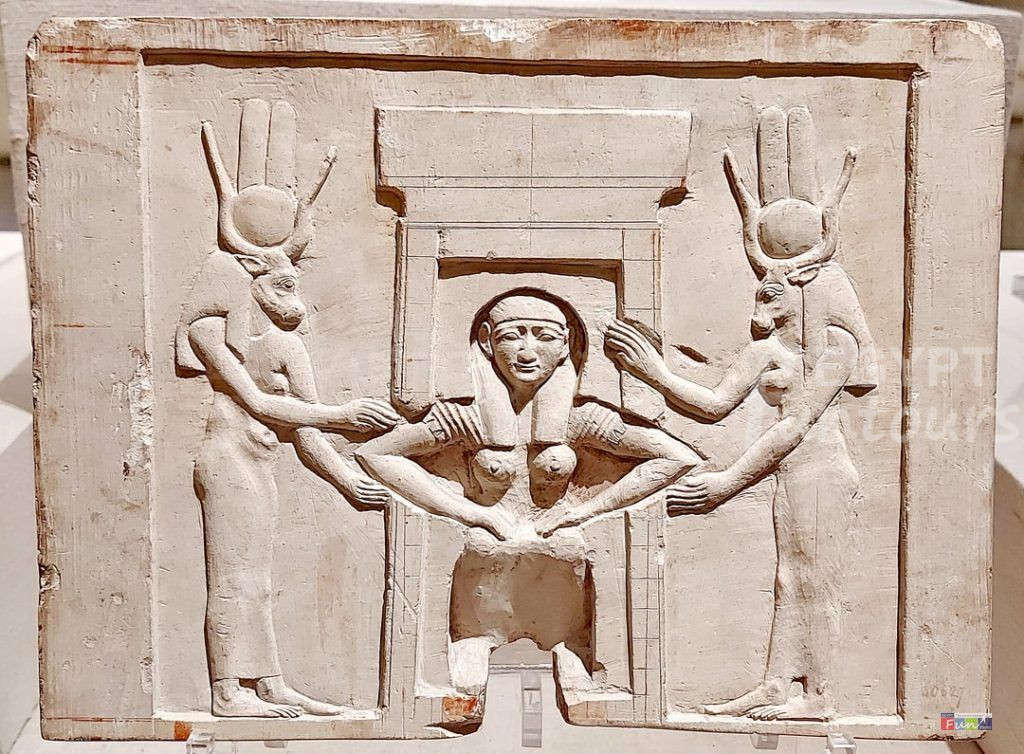
This one-of-a-kind plaque, which they discovered near Dendara’s temple, most likely shows the goddess Nut giving birth to the goddess Isis on a birth chair. Meanwhile, the birth goddesses, who have cow heads, monitor the delivery.Period of Ptolemaic / Limestone
Weights in Ancient Egypt
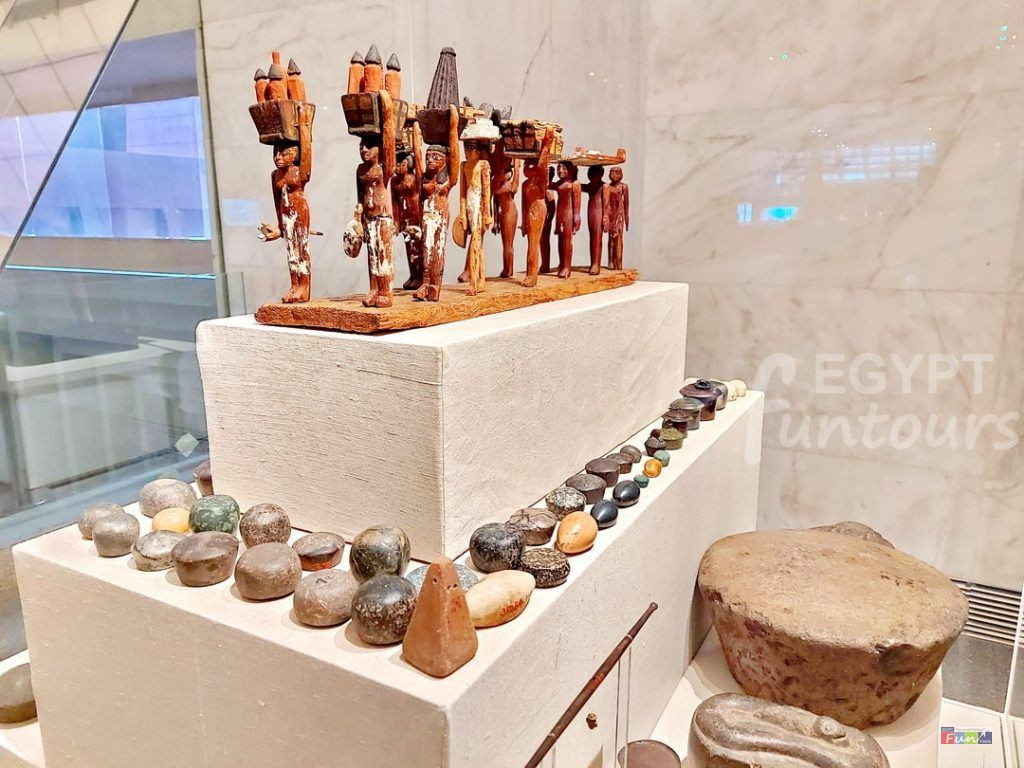
Water Clock
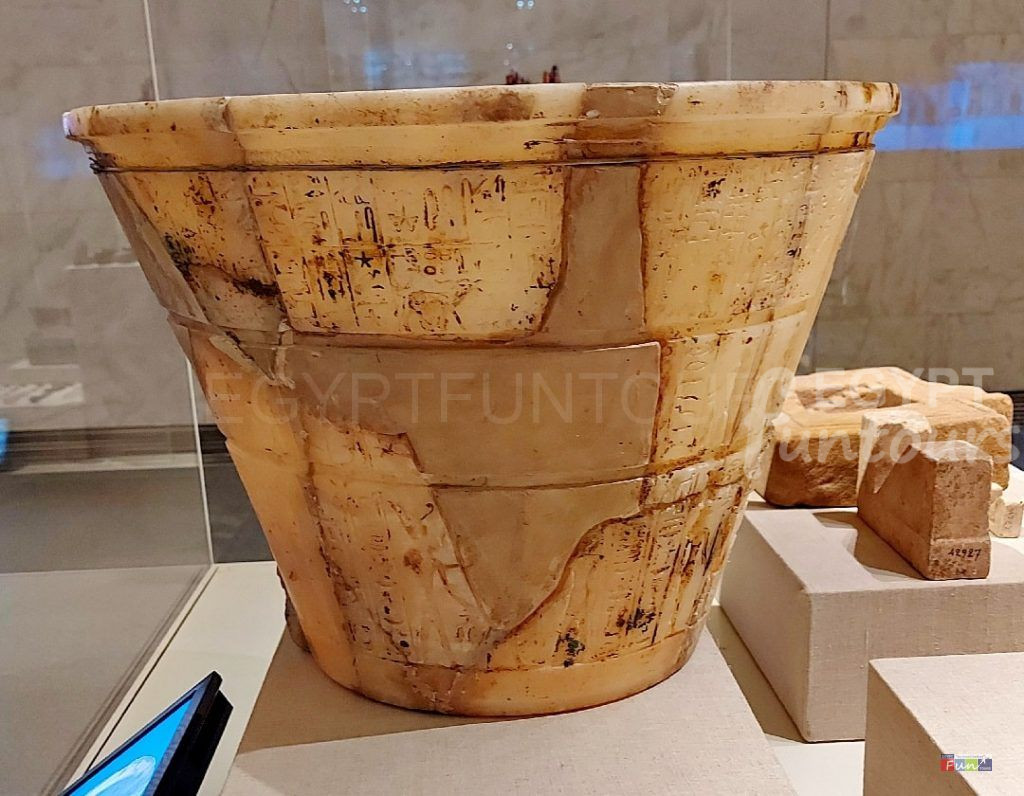
Ancient Egyptian Teeth
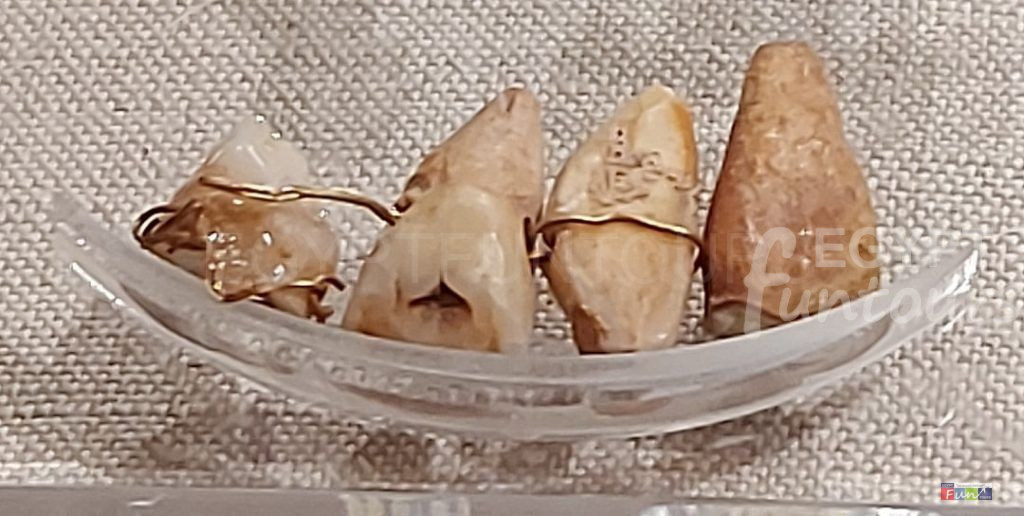
Metal Medical Tools
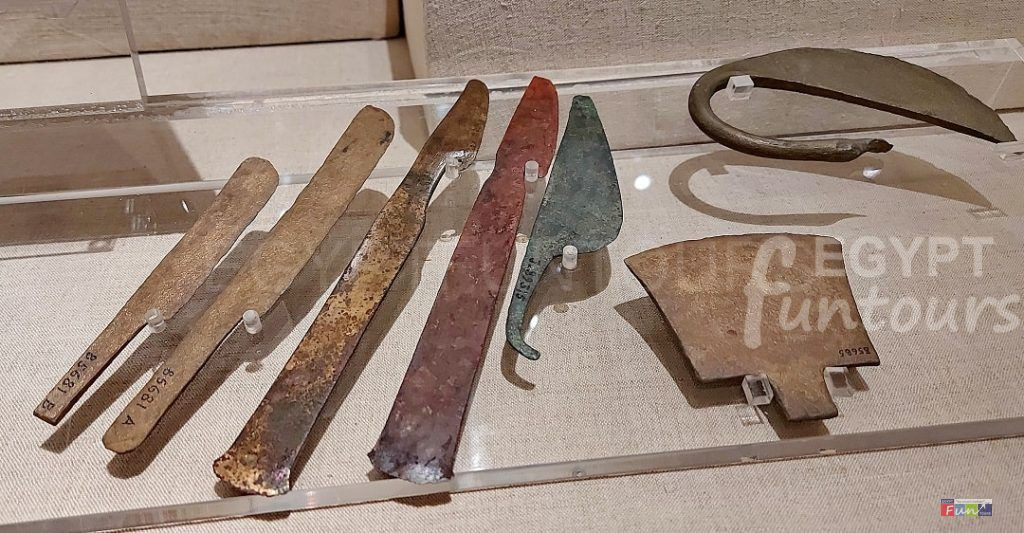
The Wife of God
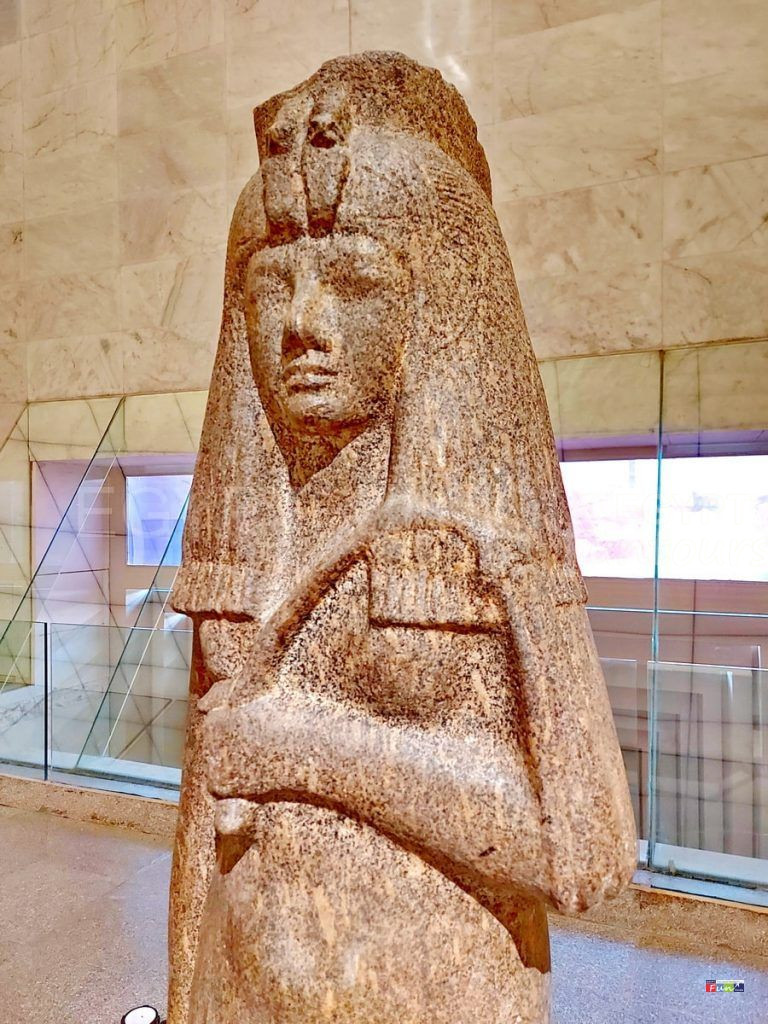
The “heavenly God’s Wife of Amun” was one of the most prominent priestly posts in the New Kingdom. Since the women who held this position wore royal crowns, had their names inscribed in cartouches, and conducted temple rites and sacrifices, the Egyptians reserved it exclusively for women of the royal house.
The crown and unique scepter on this statue suggests that it is from the Late Period and belonged to one of the almighty God’s wives – Dynastic Period Artifacts in Civilization Museum (NMEC)
Karnak / 3rd Intermediate Period (1069 – 747 BCE) / Granite


